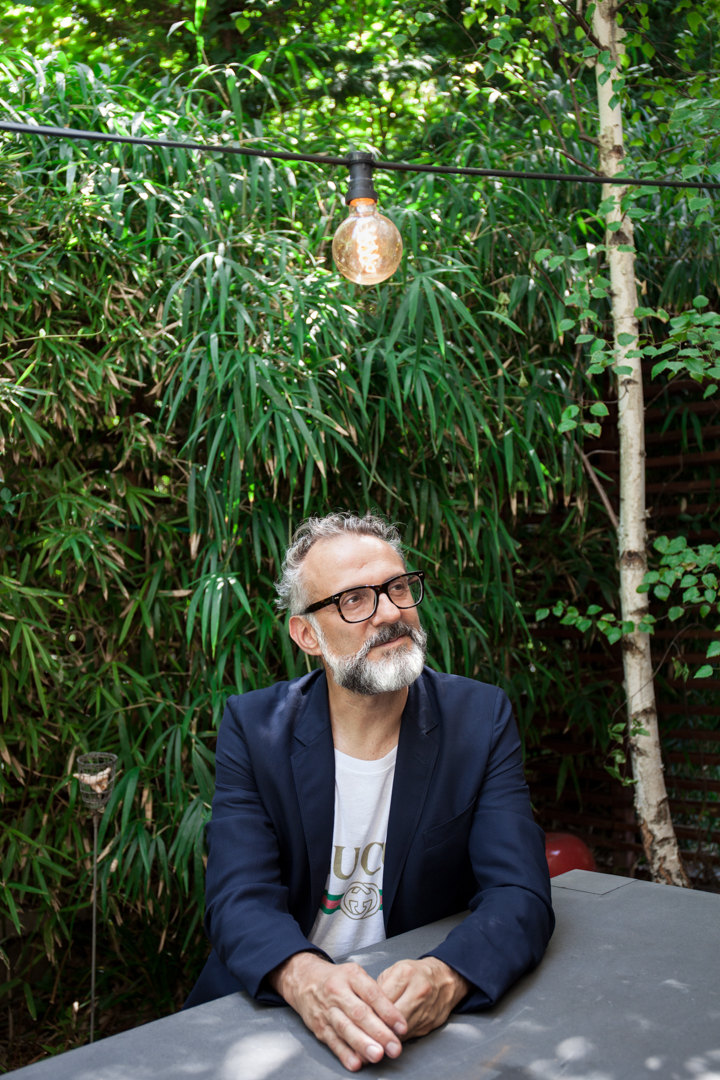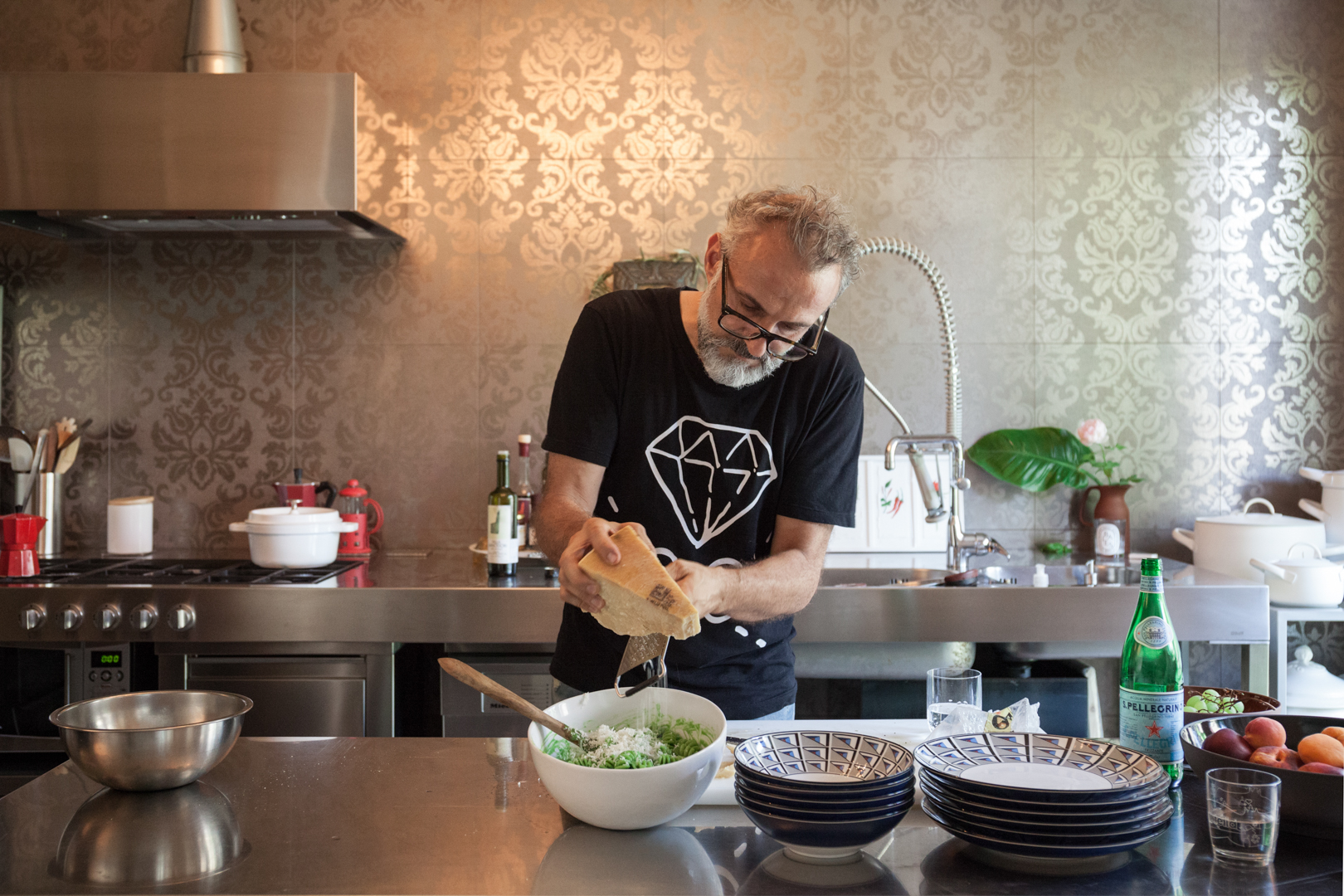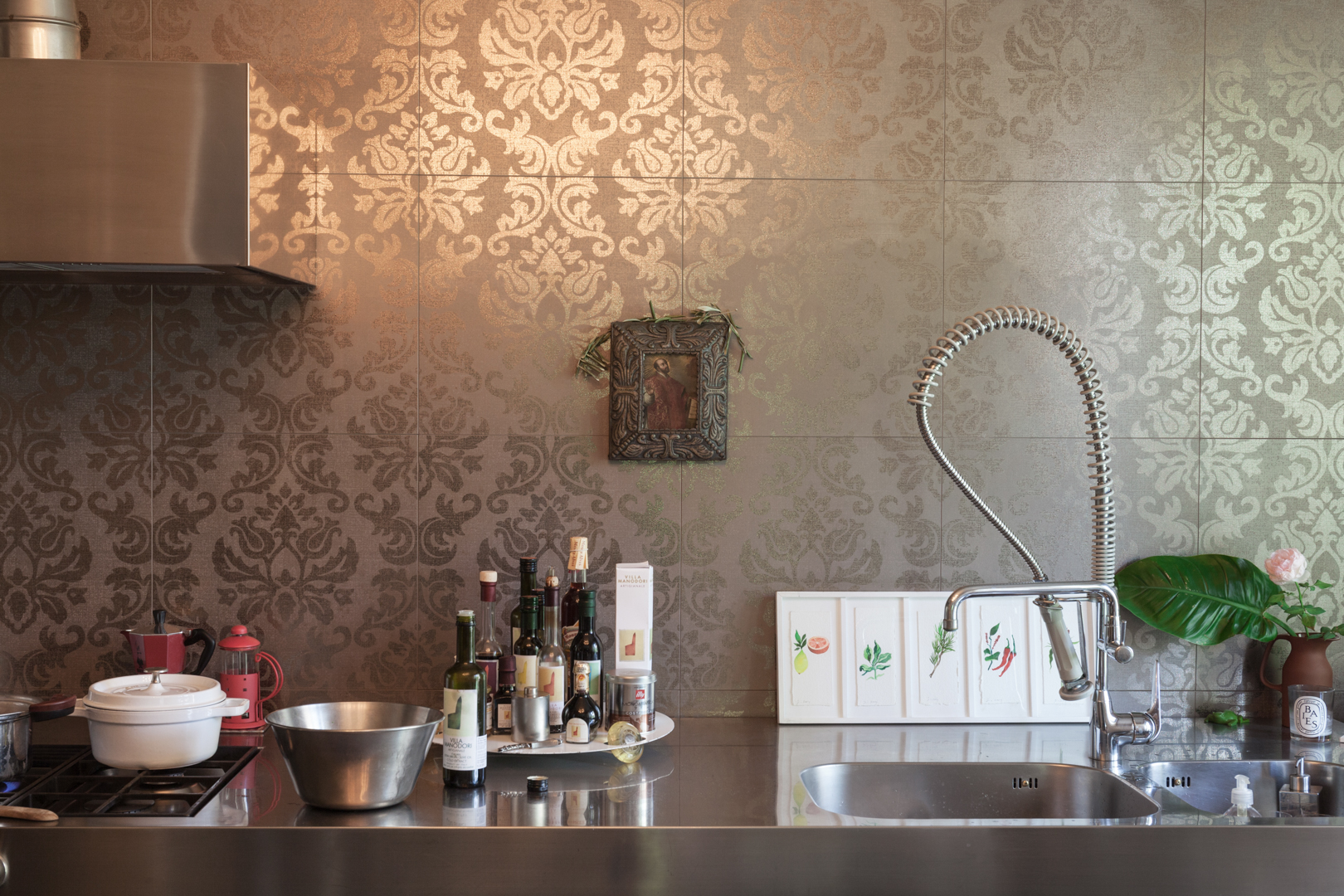Massimo Bottura
for Financial Times
“Massimo Bottura is committing culinary sacrilege. Preparing fusilli al pesto in his surprisingly small kitchen in Modena, northern Italy, he adds mint, then parsley to the basil. Compounding the affront, he replaces pine nuts, a touchstone of pesto, with breadcrumbs. Millennia of Italian chefs must be spinning in their graves.
Because of his bastardisation of traditional mainstays, Bottura has sometimes been considered a kind of traitor by chefs from his home country, until his three Michelin stars that is. Now one of the world’s most lauded chefs, Bottura saw his restaurant Osteria Francescana, in Modena, lead The World’s 50 Best Restaurants list in 2016. It has been in the top three for five years. Whimsical names and concepts are its forte. “I make edible photographs,” Bottura explains. “Oops, I dropped the lemon tart”, created from a pastry chef’s blunder, was reinvented as a “deconstructed” dessert and is the restaurant’s best-known dish.
His home of 10 years is a 1957 Modernist palazzo, built by the architect of 50 cinemas. Inside, Art Nouveau features such as carved wooden doors, rare marble floors and stucco zodiac signs on the ceiling are the backdrop to a showroom of contemporary art, with an A-Z of sculptural chairs. Heraldic tiles in the kitchen resembling wallpaper are a nod to the former owner’s décor.”
from the article by Hannah Roberts on The Financial Times, October 27 2017
from the article by Hannah Roberts on The Financial Times, October 27 2017













Filippo Bardazzi ©2025